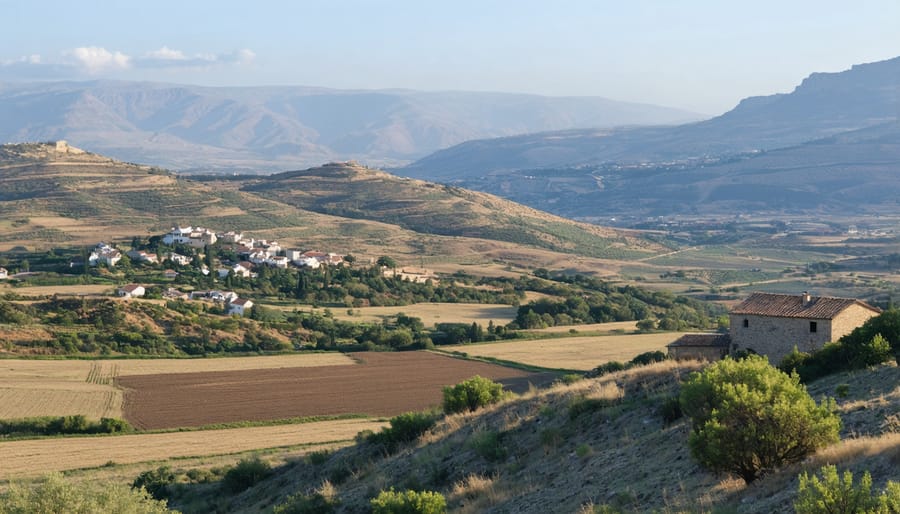Unlock the rich meaning of scripture by exploring the cultural context that shaped the Bible. Step into the world of ancient Israel and experience daily life as it was lived by the people whose stories are recorded in the sacred text. Discover how societal norms, religious practices, and historical events provide essential background for understanding the teachings and narratives that have shaped scripture and Christian faith through the ages. As you journey through the cultural landscape of the Bible, you’ll gain new insights that deepen your relationship with God’s Word and bring its timeless truths to life in powerful ways. Embark on this eye-opening adventure to uncover the vibrant tapestry of biblical culture and enrich your faith.
The World of the Bible
Geographic Context
The biblical world, spanning from Mesopotamia to Egypt and the Mediterranean Sea, was a tapestry of diverse landscapes that profoundly shaped the lives of its inhabitants. From the fertile crescent along the Tigris and Euphrates rivers to the arid deserts of the Sinai, the physical geography of the region presented both challenges and opportunities for the people of the Bible.
In the lands of Israel and Judah, the climate was characterized by wet winters and dry summers, with rainfall concentrated between October and April. This seasonal pattern dictated the agricultural cycles and daily routines of the largely agrarian society. The hilly terrain and rocky soil required extensive terracing and irrigation to support crops like wheat, barley, grapes, and olives.
The proximity to major trade routes, such as the Via Maris and the King’s Highway, facilitated cultural exchange and exposed the Israelites to the influences of neighboring civilizations. The geography also played a role in shaping the political and military landscape, with strategic cities often built on hilltops for defense and control over vital resources like water and arable land.
Understanding the geographic context of the biblical world allows us to more fully appreciate the challenges, opportunities, and daily realities faced by the people whose lives and faith are recorded in the pages of Scripture.

Social and Political Structures
In biblical times, society was structured around a patriarchal system, with the father serving as the head of the household. The family unit was the foundation of society, and extended families often lived together, working the land and passing down traditions from generation to generation. Women played a vital role in managing the household and raising children, while men were responsible for providing for and protecting the family.
The Israelites were originally organized into twelve tribes, each descended from one of Jacob’s sons. As their population grew and they settled in the Promised Land, they eventually established a monarchy, with kings such as Saul, David, and Solomon ruling over a united kingdom. Later, the kingdom split into two: Israel in the north and Judah in the south.
During the time of Jesus, Israel was under Roman occupation, with a complex political structure that included Roman officials, Jewish religious leaders, and local rulers such as King Herod. The Roman Empire heavily influenced the region, and the Jewish people had to navigate the challenges of maintaining their faith and identity while living under foreign rule.
Throughout the Bible, we see examples of how social and political structures impacted the lives of individuals and communities. From the stories of the patriarchs to the struggles of the early church, the biblical narrative is set against a backdrop of complex social and political realities. By understanding these contexts, we can gain a deeper appreciation for the challenges and triumphs of the people whose lives are recorded in the pages of Scripture.
Daily Life in Biblical Times

Work and Economy
In biblical times, agriculture was the primary occupation for most people. Farmers grew crops like wheat, barley, olives, and grapes, while shepherds tended flocks of sheep and goats. Fishermen, like some of Jesus’ disciples, worked the Sea of Galilee. Skilled artisans such as potters, weavers, and carpenters crafted essential goods for their communities.
Trade played a significant role in the economy, with merchants traveling along major routes like the Via Maris to exchange goods between cities and regions. The use of coins, such as the denarius mentioned in the Bible, facilitated these transactions. Tax collectors, though often despised, were important figures in the economic system, as they gathered taxes for the ruling authorities.
Economic disparities were evident, with a small wealthy class and a majority of the population living at subsistence levels. The Bible frequently addresses issues of poverty, debt, and the importance of caring for the poor and marginalized. Laws such as the Jubilee year (Leviticus 25) were meant to provide relief and restore economic balance.
Throughout the Bible, work is portrayed as a God-given responsibility and an opportunity to participate in God’s creative purposes. The Proverbs emphasize diligence and integrity in one’s labors, while cautioning against laziness and dishonest gain. Ultimately, the biblical perspective affirms the dignity of all work when done unto the Lord (Colossians 3:23-24).
Home and Family Life
In biblical times, the home served as the center of family life, where multiple generations often lived together under one roof. Gender roles were clearly defined, with men typically working outside the home as farmers, shepherds, or craftsmen, while women managed domestic duties like cooking, cleaning, and child-rearing (Proverbs 31:10-31).
Marriage was considered a sacred covenant before God, often arranged by families to strengthen social ties and ensure the continuation of lineage. The wedding ceremony involved a procession, blessings, and a feast celebrating the union (Song of Solomon 3:6-11).
Children were seen as a blessing from the Lord and were taught to honor and obey their parents (Psalm 127:3-5). Fathers were responsible for their spiritual instruction, passing down the teachings of the Torah and the stories of God’s faithfulness to the next generation (Deuteronomy 6:6-9).
Daily life revolved around the rhythms of prayer, work, and rest. Families gathered for meals, which often included bread, vegetables, fruits, and occasionally meat. They also participated in religious feasts and celebrations that marked important events in the agricultural and spiritual calendar (Leviticus 23).
Despite the challenges of ancient life, the biblical ideal of the home was one of love, respect, and devotion to God, where each member played a vital role in the family’s well-being and spiritual growth.
Religious Practices and Beliefs
Rituals and Worship
The biblical faith was centered around rituals, sacrifices, and worship practices that helped God’s people draw near to Him. At the heart was the sacrificial system, where animals were offered on the altar to atone for sins and restore fellowship with God (as outlined in Leviticus). The daily sacrifices, along with special offerings during festivals like Passover, were performed by priests in the tabernacle and later the temple.
Pilgrimages were another key ritual, with Israelites required to travel to Jerusalem three times a year for the feasts of Passover, Pentecost, and Tabernacles. These were joyous occasions of worship, sacrifice, and celebration, uniting the nation around their devotion to God. The Sabbath was also a central weekly observance, a day set apart for rest and worship.
In the temple and local synagogues, worship included prayer, singing psalms, reading scripture, and teaching. Rituals like circumcision, cleansing rites, and various blessings marked important life events. While some rituals were specific to the priests or temple, many were woven into the daily lives of God’s people, from prayers of gratitude at meals to annual festivities, reinforcing their identity as a people set apart for God. These sacred rhythms and practices provided structure for the community’s spiritual life and nurtured their relationship with the living God who had delivered and covenant with them.

Surrounding Religions
The ancient Israelites were surrounded by a diverse array of religious beliefs and practices. In Mesopotamia, the Sumerians, Babylonians, and Assyrians worshipped a pantheon of gods and goddesses, each associated with natural forces and human activities. To the west, in Canaan, the Israelites encountered Baal worship, a fertility cult that revered the storm god Baal and his consort Asherah. The Egyptians to the south had a complex religious system centered around the Pharaoh, who was considered a living god, and deities such as Ra, Osiris, and Isis. As the Israelites interacted with these cultures through trade, warfare, and diplomacy, they faced the constant challenge of remaining faithful to Yahweh amidst the temptations of foreign gods. The Bible records numerous instances of syncretism and idolatry, highlighting the struggle to maintain a distinct religious identity in a pluralistic ancient Near Eastern world.
Conclusion
Understanding the cultural context of the Bible is essential for Christians seeking to deepen their faith and gain a richer appreciation for God’s Word. By exploring the customs, traditions, and daily lives of the people in biblical times, we can better relate to the stories, teachings, and messages that God has preserved for us. As we study the scriptures with an awareness of their historical and cultural backdrop, familiar passages come alive with new meaning and relevance. We begin to see the Bible not as a distant, ancient text, but as a living, breathing testament to God’s love and His plan for humanity throughout the ages. As Christians, we are encouraged to be lifelong learners, continually seeking wisdom and understanding. By dedicating ourselves to studying the cultural context of the Bible, we embark on a rewarding journey that will enrich our faith, strengthen our connection to God, and inspire us to live out His Word in our daily lives.
